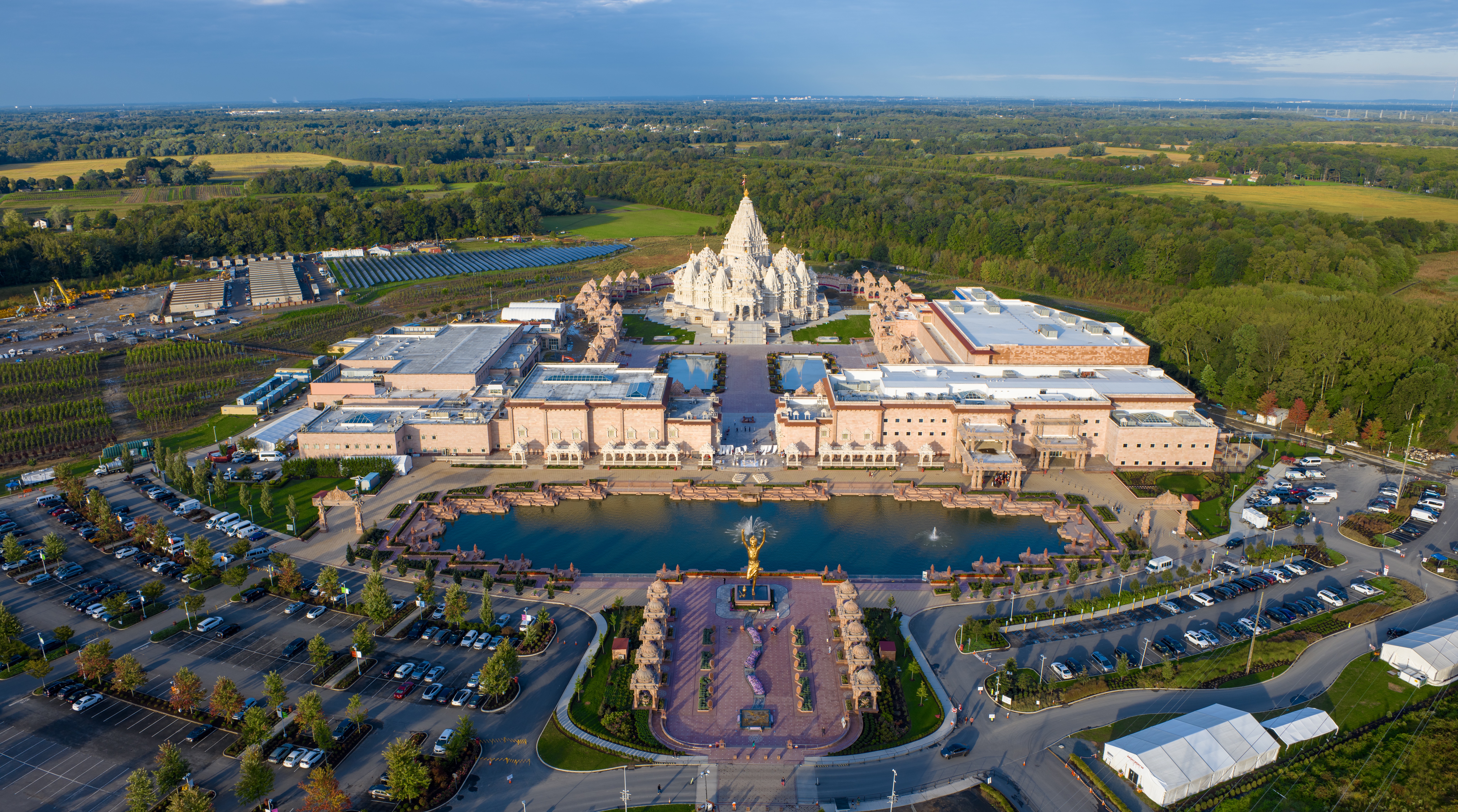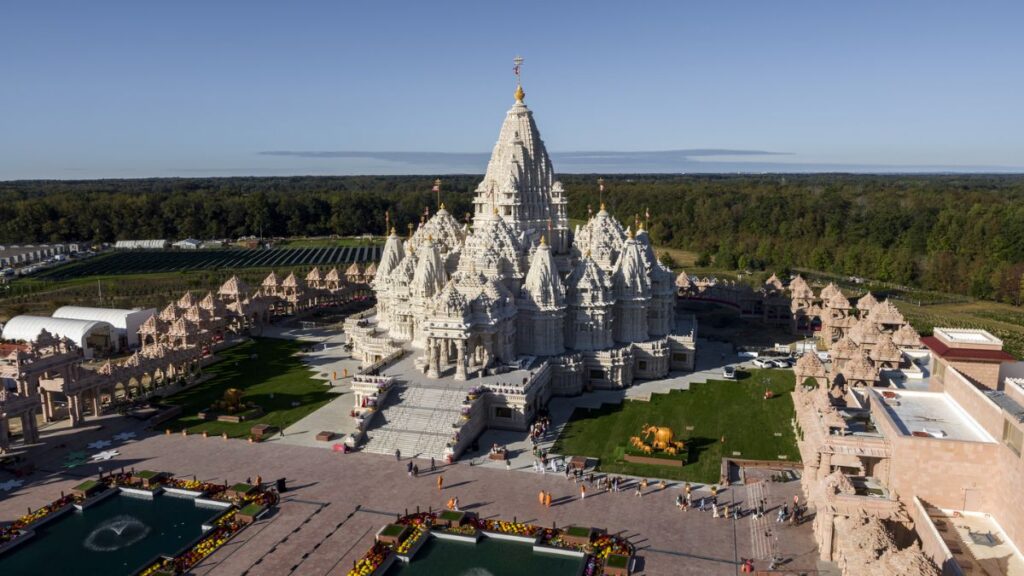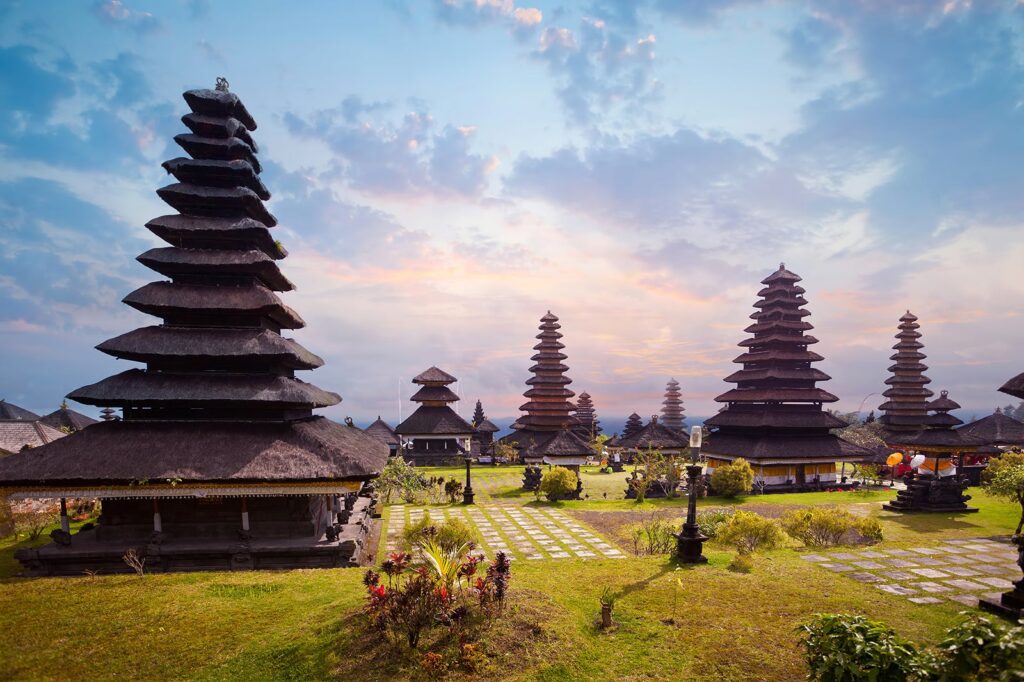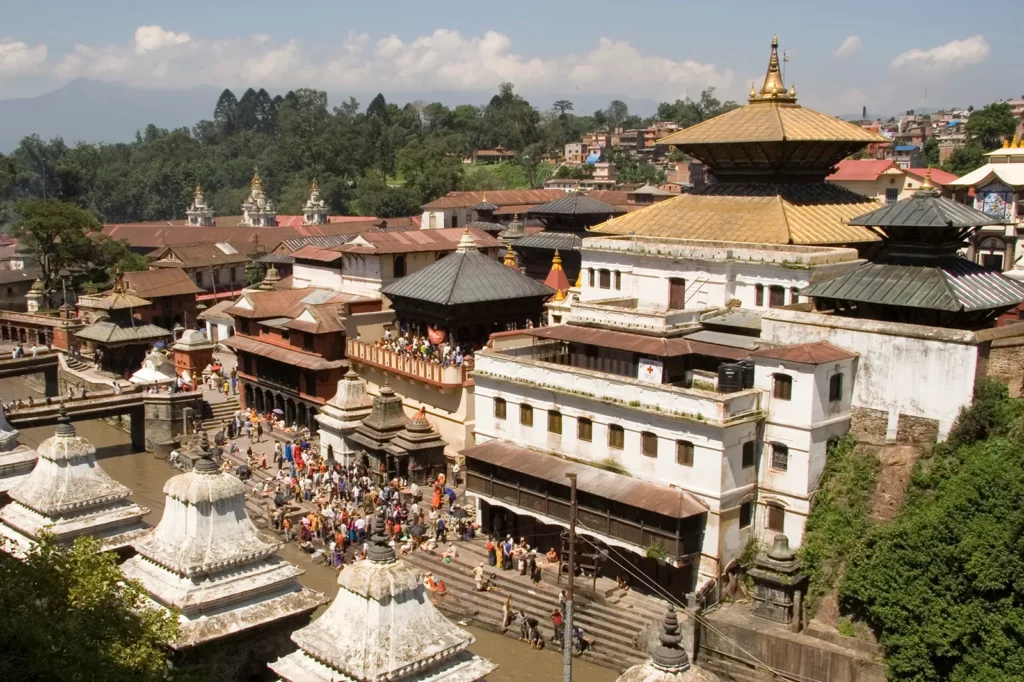Nearly six years after it was announced, Baps Hindu Mandir, the UAE’s first traditional hand-carved Hindu temple, is set to start welcoming worshippers this week.
The stunning $95 million structure, built on over 5.4 hectares of land given to the Indian community in 2015 by President Sheikh Mohamed, now stands as a symbol of harmony within the UAE.
It is also an architectural marvel. As a homage to the UAE, the temple consists of seven spires, each representing an emirate. More than 20,000 tonnes of stone and marble were shipped to the Emirates over the past three years. The temple comprises more than 400 white pillars, carved by artisans in India’s Rajasthan and Gujarat states.
While open to people of all faiths, the Baps Hindu Mandir will serve the UAE’s more than 660,000 Hindu community. When it opens to the public on Sunday, it will hold 8,000-10,000 people at a time.
Bochasanwasi Shri Akshar Purushottam Swaminarayan Sanstha or Baps is a socio-spiritual Hindu faith group who are followers of Swaminarayan, a yogi and ascetic, believed to be a manifestation of the deity Krishna. Established in 1907, it has a million-strong membership spread across more than 3,800 centres around the world.
To mark the occasion, we take a look at other stunning Hindu temples outside India:
Hindu Temple, Dubai, UAE
Inaugurated in 2022, this community temple in Jebel Ali is the labour of love of Indian businessman and philanthropist Vasu Shroff, 82.
Blending Indian and Arabic architecture, the stark white temple stands out with marble hand carvings and metal latticework on the facade. There are nine brass spires or kalashas on the outer domes, which are believed to draw in energy to the temple.
A corridor leading to the upper prayer section is filled with 105 brass bells. Spread over two storeys, the main prayer hall stands out with its large skylight from which a pink lotus sculpture is suspended, signifying peace. The 5,000-square-foot hall can accommodate up to 1,500 people at a time.
On the ground floor is a banquet hall, which can accommodate about 750 people as well as a multipurpose room for about 200 people.
More than 900 tonnes of steel, 6,000 cubic metres of concrete and 1,500 square metres of marble were used to construct the temple.
Baps Swaminarayan Akshardham, New Jersey, US
Spread across 74 hectares, this is the largest Hindu temple in the US and one of the largest in the world.
Inaugurated last year in Robbinsville, New Jersey, the complex consists of the main temple, a smaller traditional temple, a space for gathering and reflection called the Nilkanth Plaza, a welcome centre, vegetarian cafe, research institute, museum and event centre.
The temple is named after Swaminarayan, while akshardham means “the abode of Gods”.
Construction began in 2010 with the temple designed in the Nagaradi style using 1,900 square metres of Italian Carrara marble. This was obtained from quarries in Europe, then shipped to Rajasthan where artisans carved the stones, before being transported to New Jersey.
Besakih Temple, Bali, Indonesia
Also known as Pura Besakih, this ancient temple is the most important place of worship for Balinese Hindus and a major tourist attraction.
While its actual origins are unclear, the first recorded mention of its existence comes from an inscription dating back to 1007AD, according to Indonesia’s Ministry of Tourism.
Located at an altitude of 900 metres on the slopes of Mount Agung, the highest point in Bali, the temple complex comprises 23 separate temples with the largest and most important being Pura Penataran Agung.
Pashupatinath Temple, Kathmandu, Nepal
Considered the oldest temple in Kathmandu, Pashupatinath Temple was designated a Unesco World Heritage Site in 1979.
Built on the banks of the holy Bagmati river, the complex is spread across 246 hectares and includes 518 mini-temples and a main pagoda house. While the exact date of its construction is unknown, the earliest evidence of its existence dates back to 400 AD.
The current main temple was built at the end of the 17th century to replace the previous one, which was destroyed by termites. With a bunk roof and a golden spire, the two-storied roof of the main temple is made from copper and covered with gold.
Only followers of Hinduism can enter the main temple, but the rest of the complex is open to visitors of all faiths.
Batu Caves, Gombak, Malaysia
One of the most important Hindu shrines outside India, the Batu Caves are also a major tourist attraction, known for the colourful stairs and golden statue of Lord Murugan.
Located in Gombak, Selangor, the caves are believed to be more than 400 years old. The temple, which is nestled in the heart of the cave, was built in 1920. But the cave’s designation as a temple dates back to the 1800s when Indian Tamil trader K Thamboosamy Pillai installed a consecrated statue of Lord Murugan.
A total of 272 steps lead to the main temple.














